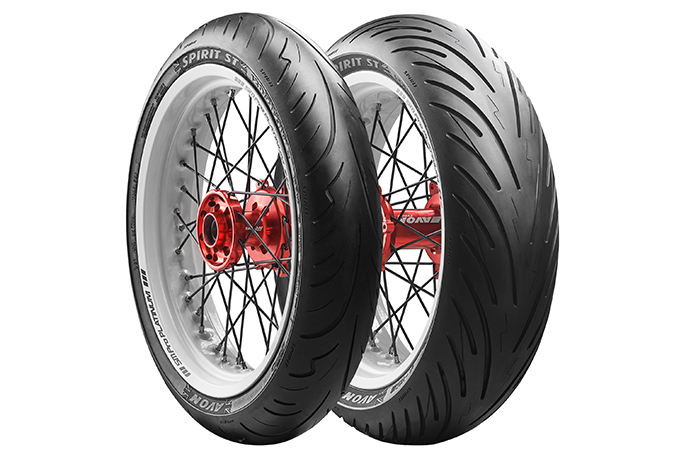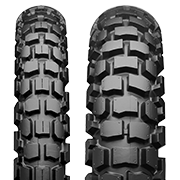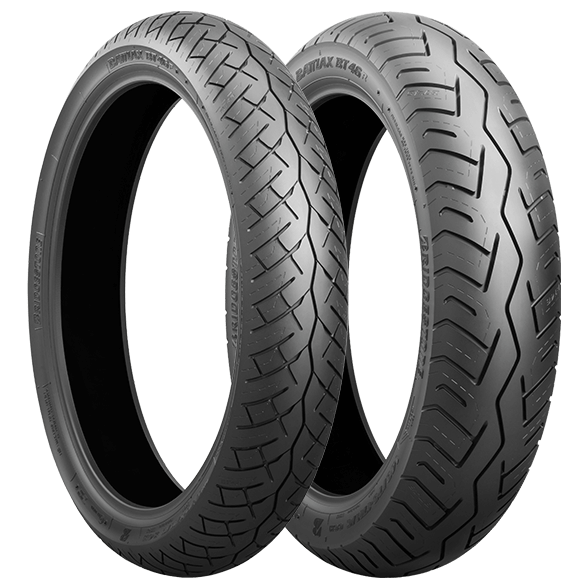All About the Necessary Motorbike Tire Guide for Optimal Bike Maintenance and Efficiency
The Crucial Bike Tire Overview functions as an important source for bikers seeking to improve their bike's performance and safety. motorcycle tyre guide. It supplies understandings into numerous tire kinds and specs that affect managing and resilience. In addition, comprehending proper maintenance practices can considerably expand tyre life. Nonetheless, many motorcyclists forget critical variables that influence their riding experience. Discovering these elements can cause notified decisions that inevitably boost both safety and security and enjoyment when traveling
Recognizing Bike Tire Kind
When picking bike tyres, understanding the numerous kinds available is essential for peak performance and security. Motorcyclists run into different tyre groups, each made for specific riding problems and styles. For example, sport tyres emphasize hold and responsiveness, making them ideal for high-performance bikes and track use. Exploring tires, on the other hand, concentrate on durability and comfort, suitable for long-distance rides. Off-road tyres include hostile step patterns, offering grip on uneven surface areas, while dual-sport tires use flexibility for cyclists that shift between off-road and on-road conditions.Additionally, cruiser tires are created for security and a smooth ride, satisfying the unique needs of cruisers and exploring bikes. Comprehending these groups permits cyclists to choose tyres that align with their riding habits and ecological problems, eventually boosting both security and performance. Each type plays an important role in guaranteeing a remarkable riding experience tailored to the private motorcyclist's demands.
Key Tyre Specs Discussed
Selecting the proper motorbike tires includes more than just understanding the different kinds; it likewise needs knowledge with vital specs that influence performance and safety. Trick requirements consist of tire size, which is normally expressed as a series of numbers indicating size, element ratio, and rim size. This code is necessary for making sure compatibility with the motorcycle.Another essential spec is the tons index, indicating the optimum weight a tyre can support. The rate score represents the maximum rate a tire can securely deal with, important for performance enthusiasts.Additionally, tread pattern and rubber substance influence grip, security, and put on features. Tyres with a softer compound tend to offer better hold however wear faster, while harder compounds last longer however might give up grip. Recognizing these requirements permits riders to make enlightened decisions, improving both their safety and security and riding experience.
Exactly how to Pick the Right Tyres for Your Bike
Just how can a motorcyclist assurance they select the best tires for their motorbike? Picking the proper tires entails recognizing the certain demands based upon riding surface, climate, and style problems. Riders need to initially seek advice from the bike's guidebook to recognize advised tire sizes and specifications.Next, they must evaluate the type of riding they plan to do-- whether it's commuting, touring, or off-road. Each group has distinctive tyre styles customized for top performance.Additionally, motorcyclists need to examine step patterns; much deeper treads use far better hold in wet conditions, while shallower footsteps boost stability on completely dry surfaces.Lastly, it is vital to examine the tire's construction and product, as these factors affect resilience and handling (motorcycle tyre guide). By examining these elements thoroughly, a cyclist can with confidence choose tyres that enhance security, performance, and overall riding experience
The Significance of Tyre Pressure and Upkeep
Tyre pressure is a substantial aspect of bike maintenance that directly affects safety and security and performance. Maintaining the proper tyre stress guarantees perfect call with the road, enhancing grip and stability throughout experiences. Under-inflated tyres can result in increased rolling resistance, causing bad fuel effectiveness and unnecessary wear on the tires. Conversely, over-inflated tyres might reduce and create an extreme ride grip, specifically in damp conditions.Regularly checking tire pressure, ideally prior to each experience, is very important to preserving the bike's overall efficiency. Motorcyclists need to describe the maker's specs for the advised pressure degrees. Furthermore, checking tyre problem and adjusting pressure according to lots and riding problems is important for safety. Proper tire upkeep contributes to prolonged tire life-span, much better handling, and improved stopping performance. Ultimately, constant attention to tyre stress and maintenance is important for ensuring a satisfying and safe riding experience.

Acknowledging Signs of Tyre Use and Damage
Acknowledging indicators of tire wear and damages is essential for preserving motorbike safety and efficiency. Secret indications consist of assessing tread deepness and carrying out a comprehensive visual assessment for any noticeable damages. Resolving these elements quickly can prevent further complications on the roadway.
Tread Depth Evaluation
As cyclists take to the roadways, the value of examining tread deepness can not be overstated, since put on or harmed tires can considerably impact safety and efficiency. Walk deepness directly influences grip, stopping range, and cornering stability. To evaluate step deepness, cyclists need to make use of a step depth gauge, determining the grooves at different factors across the tyre. A deepness of 2mm or much less suggests substantial wear and requires prompt replacement. In addition, bikers can utilize the "dime test" by putting a coin right into the walk; if the top of Lincoln's head shows up, the tyre is too put on. Normal checks assure peak hold on varied roadway problems, promoting a safer riding experience while enhancing the total handling of the motorbike.
Aesthetic Damage Inspection
Examining motorbike tires for visual damage is essential for preserving safety and security when traveling. Bikers need to consistently take a look at tires for indicators of wear such as cracks, protrudes, or slits. Unequal wear patterns may suggest alignment problems or improper rising cost of living, leading to endangered efficiency. Additionally, inspecting for international things installed in the tread can avoid prospective blowouts. Bikers need to pay very close attention to the sidewalls, as any abrasions or cuts can compromise the tyre's structure. Making sure that the step is without too much wear is vital for optimal grip. Normal visual assessments not just enhance safety but additionally prolong the life of the tires, ensuring a smoother and a lot more reputable riding experience. Timely detection of damages can stop pricey fixings and accidents.
Seasonal Tyre Considerations for Various Riding Problems
When taking into consideration bike tyres, seasonal conditions play a vital duty in efficiency. In damp weather, tyres made for boosted grasp and water displacement come to be vital for safety. Furthermore, winter season riding calls for details tire features to assure peak traction on cool, potentially icy surfaces.

Damp Climate Performance
Wet climate conditions present one-of-a-kind difficulties for motorcyclists, making the selection of tires essential for safety and security and performance. Tires created for damp weather commonly include much deeper footsteps and specialized rubber substances that boost grasp on unsafe surface areas. These tyres are engineered to direct water away, lowering the risk of aquaplaning and improving stability during rainfall. Bikers need to take into consideration tires with a balanced style, supplying additional resources both traction and sturdiness in wet problems. Furthermore, keeping correct tire pressure is essential, as under-inflated tires can endanger efficiency. Routine evaluations for wear and damages are necessary to guarantee peak feature when faced with rain-soaked roads. Choosing suitable wet-weather tires eventually adds to a much safer and a lot more pleasurable riding experience.
Wintertime Tire Needs
Riding in winter season problems postures unique obstacles that require particular tyre needs to assure safety and performance. Winter season bike tires are made with deeper footsteps and softer rubber compounds, offering improved grasp on unsafe and cold surfaces. This is essential for maintaining traction on ice, snow, and damp roads. In addition, wintertime tires typically include an unique step pattern that helps network water away, lowering the danger of aquaplaning. Bikers should likewise consider the tire's temperature durability, as performance can reduce in extreme cold. It is essential to consistently inspect tyre pressure, as it can go down significantly in reduced temperatures. By picking the appropriate winter months tires, cyclists can navigate harsh problems with better confidence and security, making certain a safer riding experience.
Tips for Correct Tire Storage and Durability
Correct tire storage space is vital for keeping their durability and efficiency in time, as overlooking this element can bring about premature deterioration. To assure perfect storage, it is vital to maintain tires in a trendy, dry setting far from straight sunshine and resources of warmth, such as heating systems or radiators. Excessive heat can trigger rubber substances to damage down, endangering the tire's integrity.Additionally, tires must be kept upright or stacked flat, relying on their kind. It is recommended to revolve them periodically to protect against level places if stacked. Correct inflation is additionally crucial; tyres must be inflated to the producer's advised pressure to avoid deformation.Lastly, it is valuable to cover tyres with a protective product to secure them from dirt and contaminants. Complying with these tips will assist extend the life of bike tyres, ensuring they continue to be Resources safe and effective for usage when the riding period returns to.
Regularly Asked Questions
Just how Typically Should I Replace My Bike Tyres?

Can I Mix Different Tire Brands on My Motorbike?
Mixing various tyre brands on a bike is usually not advised. Variants in tread patterns, rubber compounds, and performance qualities can lead to unforeseeable handling and endangered helpful site security, possibly increasing the danger of crashes.
What Is the Lifespan of a Motorcycle Tire?
The life-span of a motorcycle tire generally varies from 5,000 to 15,000 miles, influenced by factors such as riding design, tire, and surface upkeep. Routine assessments can assist ensure peak performance and safety and security throughout their use.
How Do I Dispose of Old Motorbike Tyres?
When taking care of old motorbike tyres, they ought to be taken to assigned recycling centers. Numerous regional waste administration solutions also provide tyre disposal programs, making certain environmentally friendly handling and conformity with regional policies concerning tire waste.
Are There Any Type Of Tire Guarantees Readily Available for Bikes?
Lots of motorcycle tyre producers provide guarantees that cover defects in material and craftsmanship. The specifics vary by brand name and design, so it's important for bikers to evaluate private warranty terms before acquiring brand-new tires. Off-road tires feature hostile tread patterns, providing grip on uneven surfaces, while dual-sport tyres use versatility for motorcyclists who move between on-road and off-road conditions.Additionally, cruiser tyres are created for stability and a smooth trip, catering to the distinct demands of cruisers and touring bikes. Each category has distinct tire designs customized for optimal performance.Additionally, riders need to evaluate step patterns; deeper footsteps offer much better grasp in wet conditions, while shallower footsteps boost stability on completely dry surfaces.Lastly, it is crucial to examine the tire's construction and product, as these variables influence sturdiness and handling. Proper tyre maintenance contributes to expanded tyre lifespan, better handling, and enhanced braking performance. Appropriate rising cost of living is additionally vital; tyres should be pumped up to the producer's suggested pressure to prevent deformation.Lastly, it is helpful to cover tires with a safety product to protect them from dust and pollutants. The lifespan of a motorbike tire normally ranges from 5,000 to 15,000 miles, influenced by aspects such as riding tire, style, and surface upkeep.